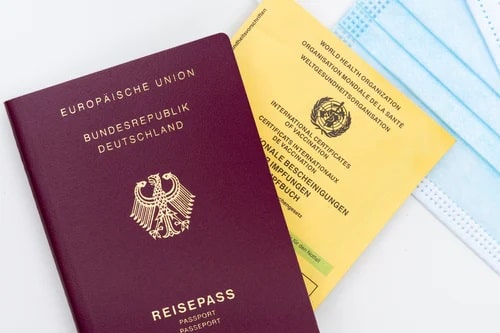Since an array of COVID-19 vaccines have rolled out, pandemic restrictions are easing around the world, including travel restrictions. Though the world is slowly opening up, travel is not yet what it was. Gone are carefree days when you could sit unmasked on a plane and not worry about getting a COVID test or providing proof of vaccination. Today, we need to be more careful than ever in planning trips – domestic and international.
Domestic Travel Protocol
The first recommendation of the CDC is to delay travel until fully vaccinated — if you must travel while unvaccinated, you must be tested for COVID-19 both before and after travel. Once fully vaccinated, the CDC allows travel freely within the U.S. However, “freely” is a bit misleading, since you must wear masks on trains, buses, planes, etc.
Every state has its own travel rules or restrictions — and they often change depending on the COVID climate. Be sure to check restrictions in your destination, and be prepared to be flexible.
International Travel Protocol
The same guidelines regarding vaccination apply to international travel the same way they apply to domestic travel — but with international travel, they are even stricter. Air travel poses more risk than domestic travel due to the various strains of the coronavirus, so even with a vaccination you still cannot come and go as you please. Many countries still have restricted entrance for non-essential travelers.
The CDC notes that if you are traveling to the U.S. from abroad, you must provide proof of a negative COVID-19 test within three days prior to your flight (or proof of recovery from the virus within the past three months). Additionally, you must have a COVID-19 test three to five days after travel.
To enter England from abroad, you must present a negative COVID test within 72 hours of arrival. There are also stricter rules for people coming from certain countries. Those from “red” countries are currently denied entrance. Those from “amber” countries must quarantine for five days and then do a corona test. To make things more complicated, the color-coding system changes frequently.
The bottom line: wherever you plan on traveling, look into that destination’s travel requirements beforehand. The U.S. Department of State has a great resource for checking the travel requirements of each country.
Green Certificates/Passports
The Parliament of the European Union recently voted in favor of putting the EU Digital COVID Certificate (EUDCC) into effect. The certificate shows the vaccination status of each individual, and those who are vaccinated or have recovered from COVID-19 will be allowed free travel within the EU. Vaccinated Americans are likely to be included among those allowed to come to the bloc.
The question of green certificates/passports is a controversial one, with many questioning the morality of it and the role governments should be playing. While these questions are important, those who wish to travel need to deal with practicalities.
COVID-19 has changed many aspects of society, from the way we shop to the way we socialize to the way we receive healthcare. With a virus so contagious, it is only natural that travel is included in this list. Getting COVID-19 under control is a worldwide effort, but each country has to take individual measures to ensure the safety of its citizens. As travelers, we must comply with travel protocol requirements and work together to end this pandemic era.
For additional resources and guidance, the Interfor team is here to help.
To find out more, please reach out to info@interforinternational.com





